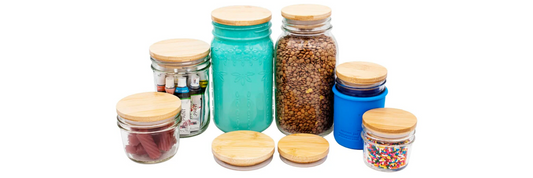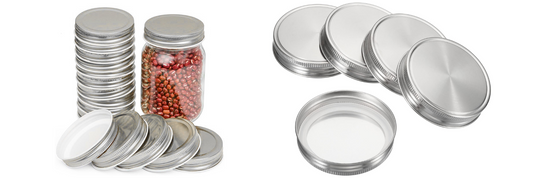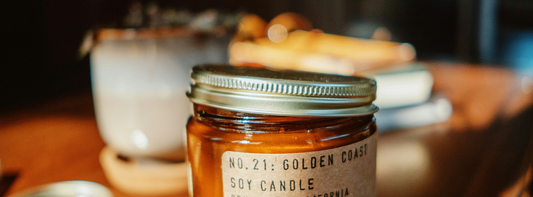Did you know that food packaging not only includes solid materials like paper, wood, or metal but also gases like nitrogen? Is it safe to use food packaging with nitrogen? Is it applicable to your business? Let's find out in the following article!
Basis of Nitrogen used in food packaging
What is Nitrogen?
Nitrogen (N) is a chemical element. It is a colorless, odorless, and tasteless gas at standard temperature and pressure. Nitrogen is the most abundant element in the Earth's atmosphere, making up about 78% by volume. It is also the seventh most abundant element in the universe.
Nitrogen is used in a variety of industrial applications. It is used to manufacture fertilizers, explosives, dyes, and pharmaceuticals. It is also used to create an inert atmosphere for welding and other industrial processes.
- What is the best packaging for food delivery?
-
Important trends in the food and beverage packaging market for 2024
Why is Nitrogen gas used in food packaging?
In short, Nitrogen gas is used in food packaging because of its unique properties that help preserve food and extend its shelf life.
In addition, nitrogen gas can be used in food packaging as nitrogen gas is considered safe for human consumption by regulatory bodies like the FDA and WHO. It is classified as a Generally Recognized As Safe (GRAS) substance and does not pose any health risks.
Application of Nitrogen Gas in Food Packaging
What foods are packaged with nitrogen?
Nitrogen is used in food packaging for a variety of food products, with the specific application depending on the desired outcome. Here are some of the most common types of foods packaged with nitrogen:
Snack Foods
- Chips: Nitrogen helps maintain the crispness of chips and prevents them from becoming stale.
- Popcorn: Nitrogen prevents popcorn kernels from losing moisture and becoming tough.
- Nuts: Nitrogen extends the shelf life of nuts by preventing them from becoming rancid.
- Pretzels: Nitrogen helps maintain the shape and texture of pretzels.
- Crackers: Nitrogen prevents crackers from becoming soggy.
Fresh Meat
- Beef: Nitrogen preserves the color of beef and keeps it looking fresh.
- Ground meat: Nitrogen prevents ground meat from browning and becoming oxidized.
- Poultry: Nitrogen extends the shelf life of poultry and prevents it from spoiling.
- Seafood: Nitrogen protects seafood from bacteria and other contaminants.
- Prepackaged Lunch Meat:
- Sliced meats: Nitrogen prevents sliced meats from drying out and becoming tough.
- Hot dogs: Nitrogen helps maintain the shape of hot dogs and prevents them from splitting.
- Sausages: Nitrogen prevents sausages from becoming rancid and developing an off-flavor.
Other Foods
- Coffee and tea: Nitrogen protects coffee and tea from oxygen and moisture loss, preserving their flavor and aroma.
- Dried fruits: Nitrogen prevents dried fruits from becoming dry and brittle.
- Processed cheese: Nitrogen prevents processed cheese from becoming moldy and preserves its texture.
- Salad mixes and bagged lettuce: Nitrogen helps keep salad mixes and bagged lettuce fresh and crisp.
- Wine bottles: Nitrogen is used to displace oxygen in wine bottles to prevent oxidation and preserve the flavor of the wine.
- Emergency food rations: Nitrogen is used to preserve the shelf life of emergency food rations.
- Berries: Nitrogen helps maintain the freshness and color of berries.

Common type of packaging with nitrogen gas
There are several common types of packaging that use nitrogen gas to preserve food, each with its own advantages and applications. Here are some of the most common:
Bags and pouches
- Snack bags: Chips, popcorn, nuts, pretzels, and other snacks are often packaged in bags flushed with nitrogen to maintain their crispness and prevent spoilage.
- Coffee bags: Nitrogen helps preserve the aroma and flavor of coffee beans and ground coffee.
- Dried fruit pouches: Nitrogen helps prevent dried fruits from becoming dry and brittle.
- Salad mixes and bagged lettuce: Nitrogen helps keep these leafy greens fresh and crisp.
Rigid containers
- Wine bottles: Nitrogen is used to displace oxygen in wine bottles to prevent oxidation and preserve the flavor of the wine.
- Canned goods: Some canned foods, such as tuna and sardines, are packed with nitrogen to prevent the cans from bulging.
- Processed cheese containers: Nitrogen helps prevent processed cheese from molding and preserves its texture.
Flexible pouches with modified atmosphere packaging (MAP)
- Fresh meat and poultry: MAP with a high nitrogen content extends the shelf life of these products and prevents browning.
- Prepackaged lunch meat: Nitrogen helps maintain the color and flavor of lunch meat and prevents it from becoming dry.
What Are Advantages and Disadvantages of Food Packaging with Nitrogen?
What are Benefits of Food Packaging with Nitrogen?
As mentioned above, nitrogen gas is safe to use with food. Furthermore, this gas offers several other benefits, including:
- Displacing Oxygen: Oxygen in the air promotes the growth of bacteria and other microorganisms that spoil food. Nitrogen, on the other hand, is inert and does not react with food, thus inhibiting the growth of unwanted microbes.
- Reducing Moisture: Oxygen also carries moisture, which can cause food to become soggy and lose its crispness. Nitrogen displaces both oxygen and moisture, preventing these undesirable changes.
- Protecting Color and Flavor: Oxygen can react with the pigments and fats in food, causing it to lose its color and develop off-flavors. Nitrogen helps maintain the original color and flavor of the food.
- Preventing Oxidation: Oxidation can cause fats in food to turn rancid and develop an unpleasant odor. Nitrogen slows down this process by limiting the contact of food with oxygen.
- Maintaining Shape and Texture: Nitrogen prevents food from collapsing or losing its shape, especially in delicate products like chips and pastries.
What are disadvantages of nitrogen gas for food?
While nitrogen gas has many benefits for food preservation, there are also some potential disadvantages to consider:
Environmental impact
- Nitrogen production: The production of nitrogen gas can be energy-intensive, leading to greenhouse gas emissions and air pollution.
- Leakage and waste: Leakage of nitrogen gas from packaging can contribute to greenhouse gas emissions. Additionally, the disposal of nitrogen-filled packaging can be challenging and contribute to landfill waste.
Cost
- Production and packaging: The cost of producing nitrogen gas and using it for packaging can be higher compared to other preservation methods.
- Equipment and infrastructure: Investing in equipment for nitrogen flushing or MAP can be expensive for manufacturers.
Food quality
- Loss of flavor and nutrients: Although nitrogen helps prevent some changes in food, it can also lead to the loss of certain volatile compounds that contribute to flavor and aroma. Additionally, extended storage in nitrogen-filled environments can result in the loss of some vitamins.
- Potential for contamination: Some bacteria can grow in anaerobic environments created by nitrogen, potentially spoiling the food. This risk can be minimized through proper hygiene and packaging techniques.
Is Nitrogen Gas Cost-effective for Small Businesses?
While the cost of nitrogen gas itself may be relatively low, the associated equipment, installation, maintenance, and usage optimization can significantly impact the overall expense for small businesses.
The cost elements of using nitrogen gas for a small business can be divided into two main categories:
Initial Investment
- Nitrogen gas source: This could be cylinders, tanks, or an on-site generator. On-site generators are the most expensive option, followed by tanks and then cylinders.
- Delivery and installation: This cost will vary depending on the supplier and your location.
- Equipment: You may need to purchase additional equipment, such as regulators, hoses, and fittings.
- Training: Your employees may need training on how to safely use and handle nitrogen gas.
Recurring Costs
- Nitrogen gas refills: This will depend on your usage and the size of your container.
- Maintenance and repairs: You will need to regularly maintain and repair your equipment.
- Regulatory compliance: You may need to comply with certain regulations related to the use of nitrogen gas.
- Waste disposal: There may be costs associated with the disposal of empty nitrogen gas cylinders.
Be careful to evaluate your needs and implementing cost-saving measures is crucial to ensure the profitability of using nitrogen gas.
Alternative to Nigtrogen Gas in Food Packaging
Nitrogen gas is a popular choice for food packaging due to its ability to prevent spoilage and extend shelf life. However, it can be costly for some businesses. Here are several inexpensive alternatives offer similar benefits:
Carbon Dioxide (CO2)
While not as effective as nitrogen in preventing oxidation, carbon dioxide offers a readily available and cheaper option. It effectively inhibits bacterial growth but can cause some foods to lose color and texture.
Modified Atmosphere Packaging (MAP)
This method uses a combination of gases, typically CO2 and nitrogen, to create a controlled atmosphere inside the packaging. Although MAP effectively extends shelf life and preserves food quality, it requires specialized equipment and can be more complex to implement.
Vacuum Packaging
A relatively inexpensive option, vacuum packaging removes oxygen from the packaging, preventing spoilage and extending shelf life. However, it can crush delicate foods and is not suitable for all types of products.
Active Packaging
This method incorporates materials that absorb or release gases, like oxygen scavengers, to create a modified atmosphere inside the packaging. While effective in extending shelf life and improving food quality, active packaging can be more expensive and may require additional testing.
To summarize, nitrogen gas is widely used in food packaging; however, businesses must carefully assess expenses or look into alternatives to avoid spending excessive costs.









